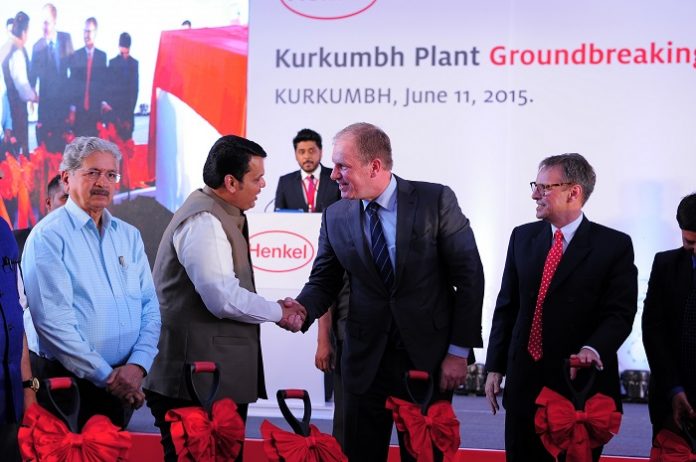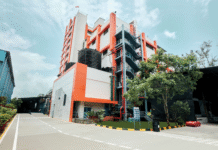
On 11 June 2015, Henkel’s held a ground breaking or foundation ceremony at Kurumbh, around 50 kilometres, South-East of Pune in Maharashtra. Jeremy Hunter, president, Henkel Group India, announced an investment of about 30 million Euro(approximately`216 crore)for its newest and largest adhesive manufacturing plant in India. The chief minister of Maharashtra, Devendra Fadnav is, and other dignitaries from the Maharashtra state govern -ment along with Hunter laid down the foundation of the plant.
Expected to be functional by early 2017, the plant will have an operational area of 20,000 square metres with a production capacity of 80,000 tonnes of adhesives and surface treatments for packaging, automotive and industrial applications. According to Hunter, an
additional 5,000 square metres can be added at the same location in the future in case it is needed.
The Kurumbh plant will enable the Henkel Group to work closely with Indian customers and localize its product portfolio. It will reduce imports and 50% of the raw material will be sourced from domestic markets while bringing the best global technology to India. The new
plant will play a crucial role in an emerging Indian market, which is believed to be one of the biggest markets for Henkel as 44%ofthecompany’s sales are generated in emerging markets.
Hunter said, “Henkel Group has been in India for three decades. The new plant is the tenth manufacturing unit in the country. As we are running out of capacities we are trying to develop our footprint across 25 acres of land in Pune for the next 10 to 15 years. It will create more than 500 jobs. Two major technologies will be used that will produce surface
treatment products for the steel industry and adhesives for the laminate industry.”
“Our sustainability strategy is to achieve more with less and by 2030 we will triple our output from the same carbon footprint. We had planned to improve our efficiency by 30% in 2015, but this was achieved in 2014. Our plant manager in India has a target to reduce
water and power consumption and send waste to landfill. Each month we have a specific measurable target. Due to our vast experience, we know the Indian market very well. We intend to develop a strong partnership with our customers to enable us solve their problems,” concluded Hunter.










